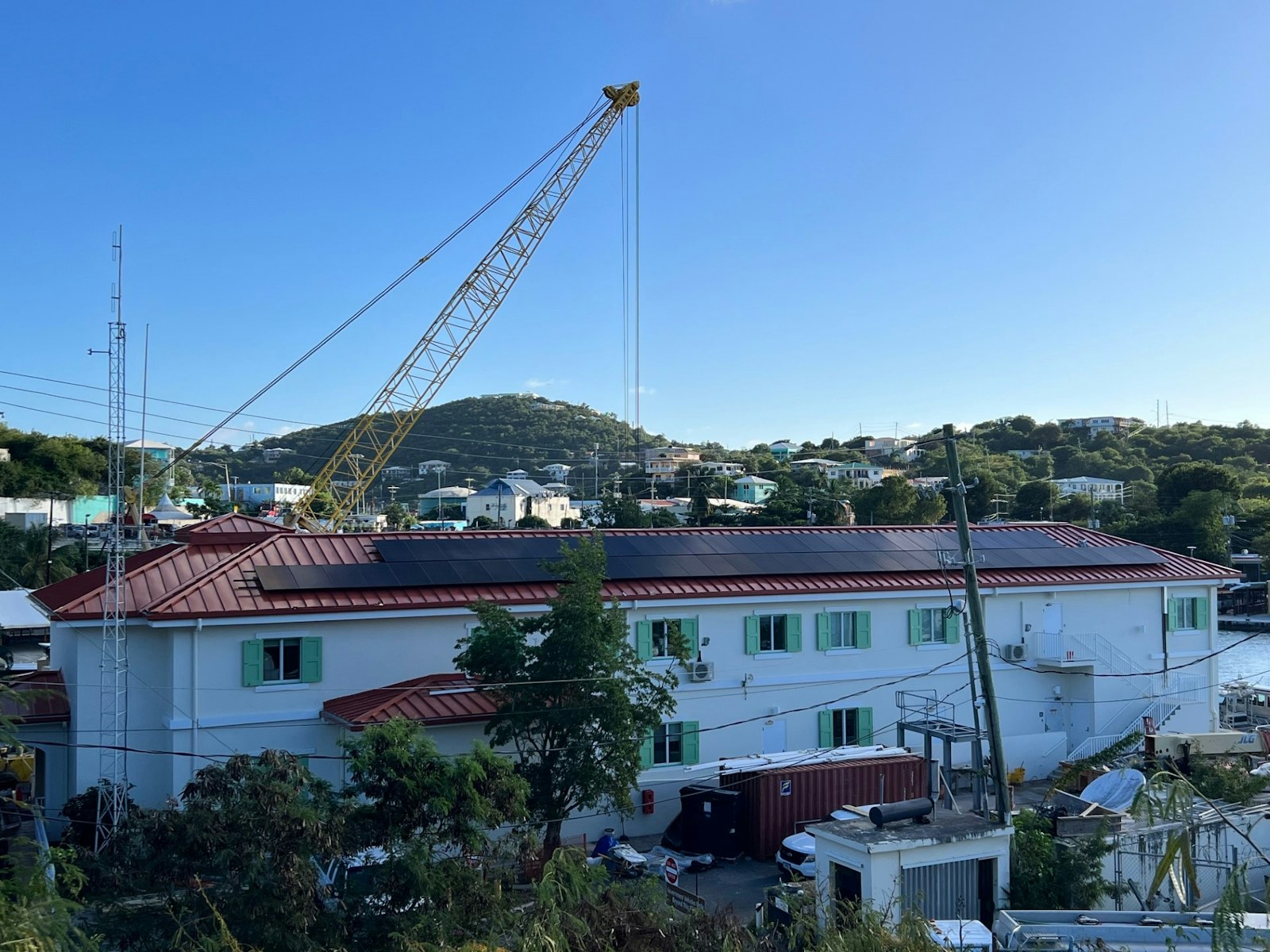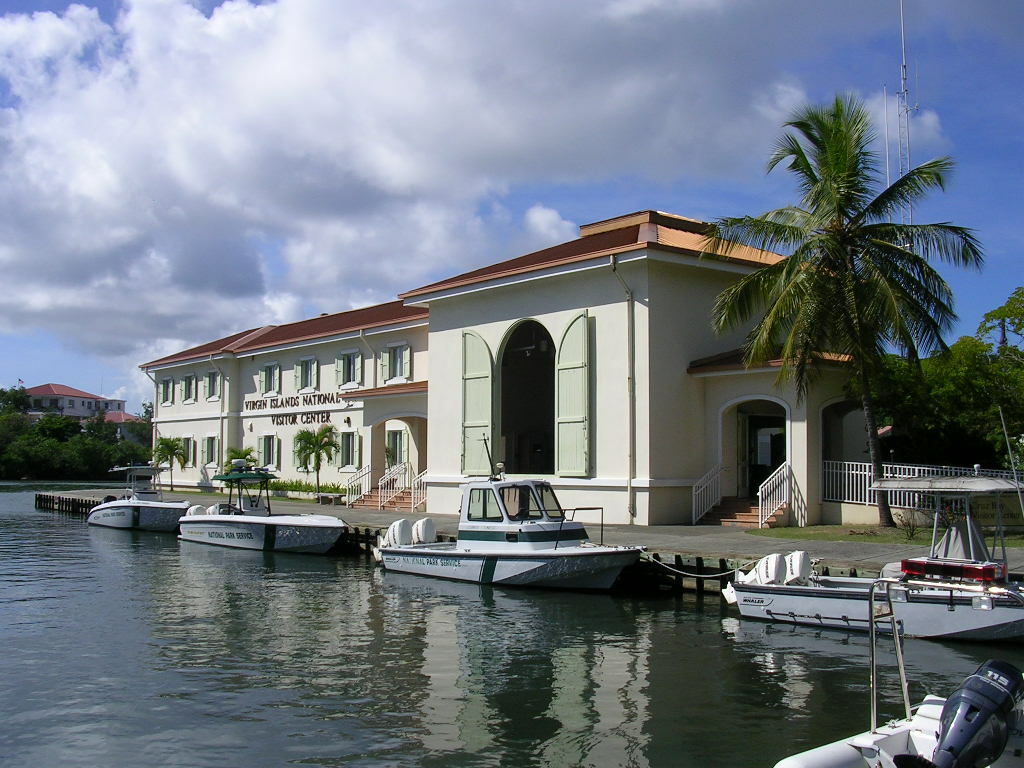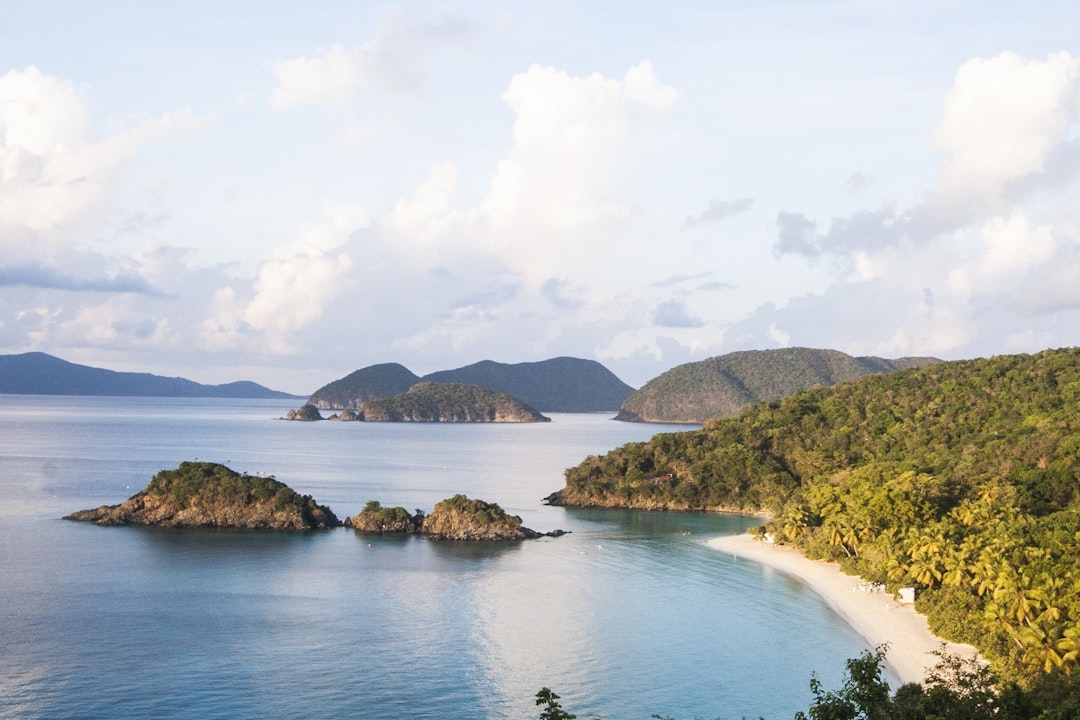
Covering the majority of the island of St. John, Virgin Islands National Park features breathtaking beaches, tropical forests, and relics from the island history.

With support from the National Park Foundation (NPF), Virgin Islands National Park purchased and installed a new rooftop solar array at its Cruz Bay Visitor Center to reduce emissions and increase resiliency for building operations.
The 60-panel, 19-kW photovoltaic array, which was installed at the start of 2024, is part of the park’s multifaceted efforts in recent years to invest in a resilient energy future and reduce greenhouse gas emissions.
The solar infrastructure is helping the park decrease its fossil fuel consumption and associated carbon emissions, as well as increase its energy reliability. Previously, the park’s power source was entirely fossil fuel-based and subject to persistent outages. Electricity comes from the Virgin Islands’ only utility company, which requires transport from St. Thomas across more than five miles of underground cables to St. John, making it vulnerable to regular power outages.

The solar installation will offset peak and daytime utility use and is estimated to reduce the building’s electrical consumption by 70 percent, resulting in about 31,400 kilowatt-hours of savings annually. The National Renewable Energy Laboratory had identified the park as the National Park Service’s (NPS) top southeast region site for cost savings potential with direct purchase of a photovoltaic system.
The project also enables the park to advance its environmental stewardship and education goals around sustainability.
The solar project is part of a broader effort to make the park headquarters and visitor center more resilient and mitigate the impacts of a changing climate on park infrastructure. The recent renovation replaced windows, roofs, and doors to bolster the building in the face of stronger tropical storms and hurricanes. New sustainable elements also include an energy efficient HVAC system, LED lighting, and windows treated to prevent bird collisions.


Renovations to the building – which serves dual purposes as the visitor center and park ranger offices – are wrapping up, with plans to open in March 2024 after extensive reconstruction to address damage from Hurricanes Irma and Maria in 2017.
Park staff are moving back into the building, and employees will soon be working on the same island for the first time since the two category 5 hurricanes tore through the park in 2017. They’re returning to a building that’s more energy efficient, sustainable, and prepared for the future.
In addition to the solar project at Virgin Islands, NPF is supporting solar energy infrastructure projects at other national parks across the country, from Acadia in Maine to Big Bend in Texas. The investments are accelerating NPS’ goals to reduce energy, cut greenhouse gas emissions, and work toward “net zero parks,” in which parks lower greenhouse gas emissions to as close to zero as possible and use only as much energy as they produce.
NPF supported this work through its Resilience & Sustainability program, which invests in projects at national park sites that reduce environmental impact and make parks more resilient and sustainable.
Generous funding from NPF donors Becky & Wallace Newton supported this project. NPF thanks our donors, as well as many other foundation and corporate partners, who make projects like these possible.